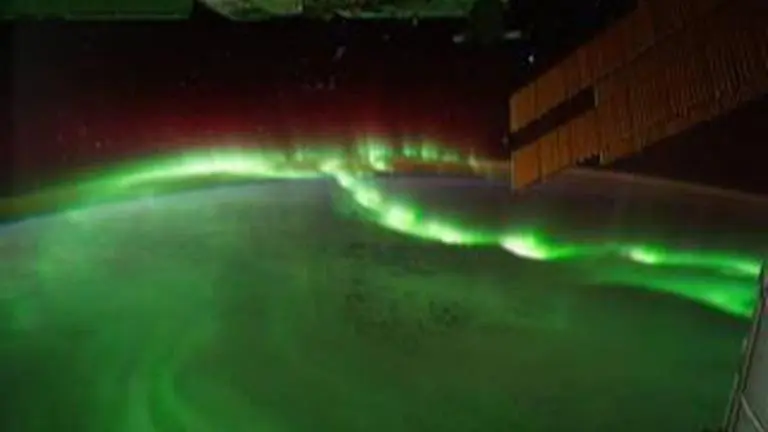Updated 12 June 2022 at 22:40 IST
Astronaut from ISS shares sublime video of auroras dancing over Earth; WATCH
Astronaut Samantha Christoforretti, who is currently aboard the ISS, shared a video showcasing auroras dancing over the Earth's north pole.
- Science News
- 2 min read

In the long list of the Earth's characteristics we can marvel over, the phenomenon of aurora formation is without a doubt one of the most intriguing ones. If you think otherwise, European Space Agency (ESA) astronaut Samantha Christoforretti's latest social media post might change your opinion. In her recent tweet, Christoforretti, who is currently aboard the International Space Station (ISS), shared a video showing the orbital outpost orbiting the Earth with glorious auroras dancing below.
Aurorae! Do you know what makes the atmosphere glow? Electrically charged particles from the sun collide with air molecules. You can see them in the far northern and far southern regions of the Earth… do you know why? #MissionMinerva #Aurora #Earth @esa @esaspaceflight @ESA_EO pic.twitter.com/0H7PHcldyV
— Samantha Cristoforetti (@AstroSamantha) June 12, 2022
"Electrically charged particles from the sun collide with air molecules. You can see them in the far northern and far southern regions of the Earth", the astronaut wrote in her tweet.
Do you know how auroras are formed?
(Illustration of aurora formation; Image: NASA)
In the simplest of terms, auroras, which are called aurora borealis in the North pole and aurora australis in the South, are formed when the charged solar particles interact with the Earth's magnetic field. Our planet's magnetic field is extremely crucial for our survival as it shields us from most of the harmful radiation energy and particles. The sun keeps ejecting strong solar flares toward the Earth but the intensity varies on different occasions. When the solar ejection is too strong, some of the energy and small particles can travel down the magnetic field lines at the north and south poles into Earth's atmosphere.
Advertisement
When these solar particles interact with the Earth's atmosphere, large streams of colorful lights emerge, with oxygen giving off the green and red light and nitrogen giving off blue and purple.
Earth is not the only one with auroras
Since the auroras are a result of the solar particles interacting with a planetary magnetic field, any planet having a magnetic coat around it will experience the formation of the auroras. Interestingly, auroras have also been found on planets such as Saturn and Jupiter. Most recently, UAE's Hope probe discovered a new type of aurora on Earth's neighbour Mars. Tap here to read more.
Advertisement
Published By : Harsh Vardhan
Published On: 12 June 2022 at 22:40 IST

